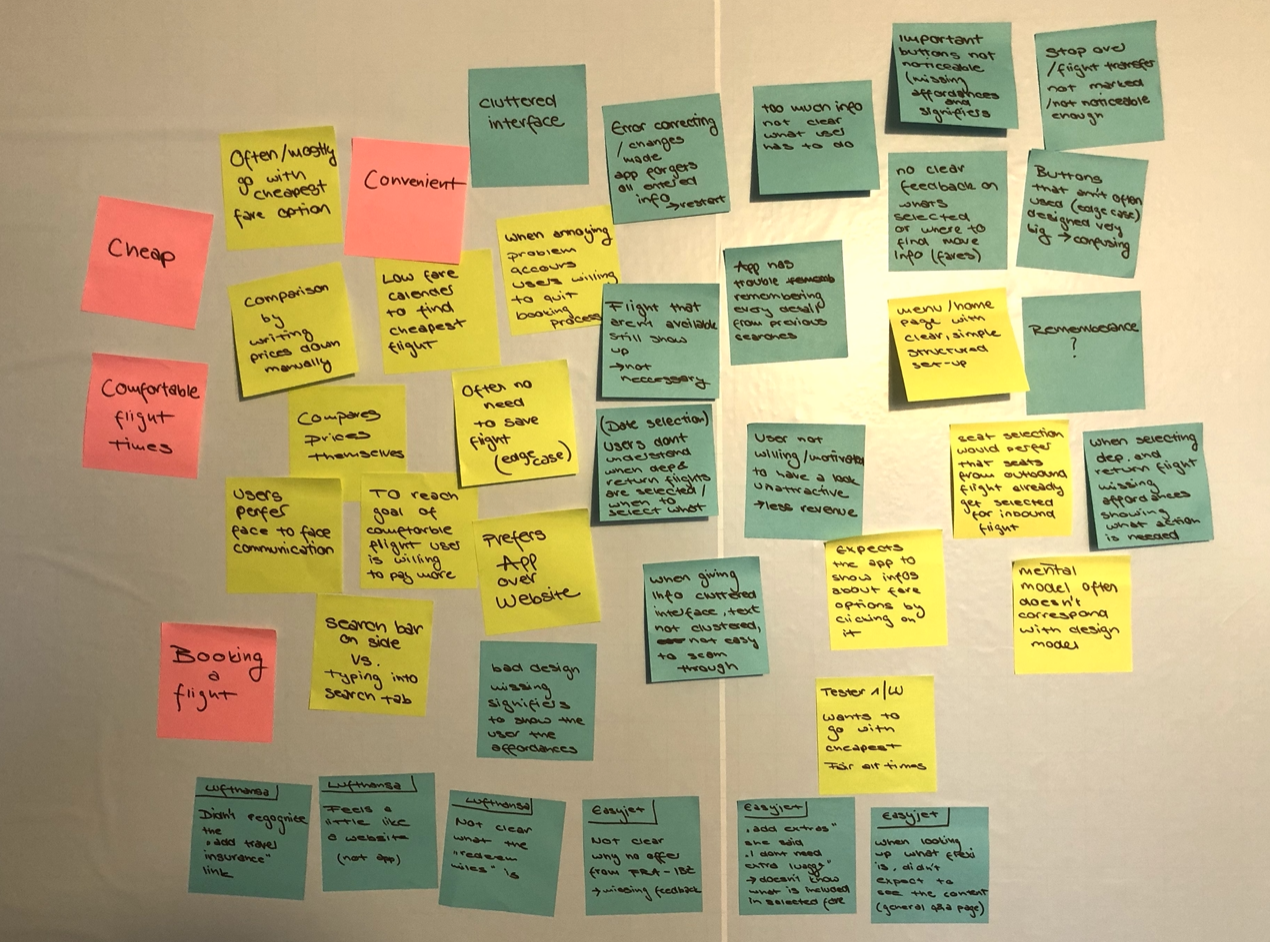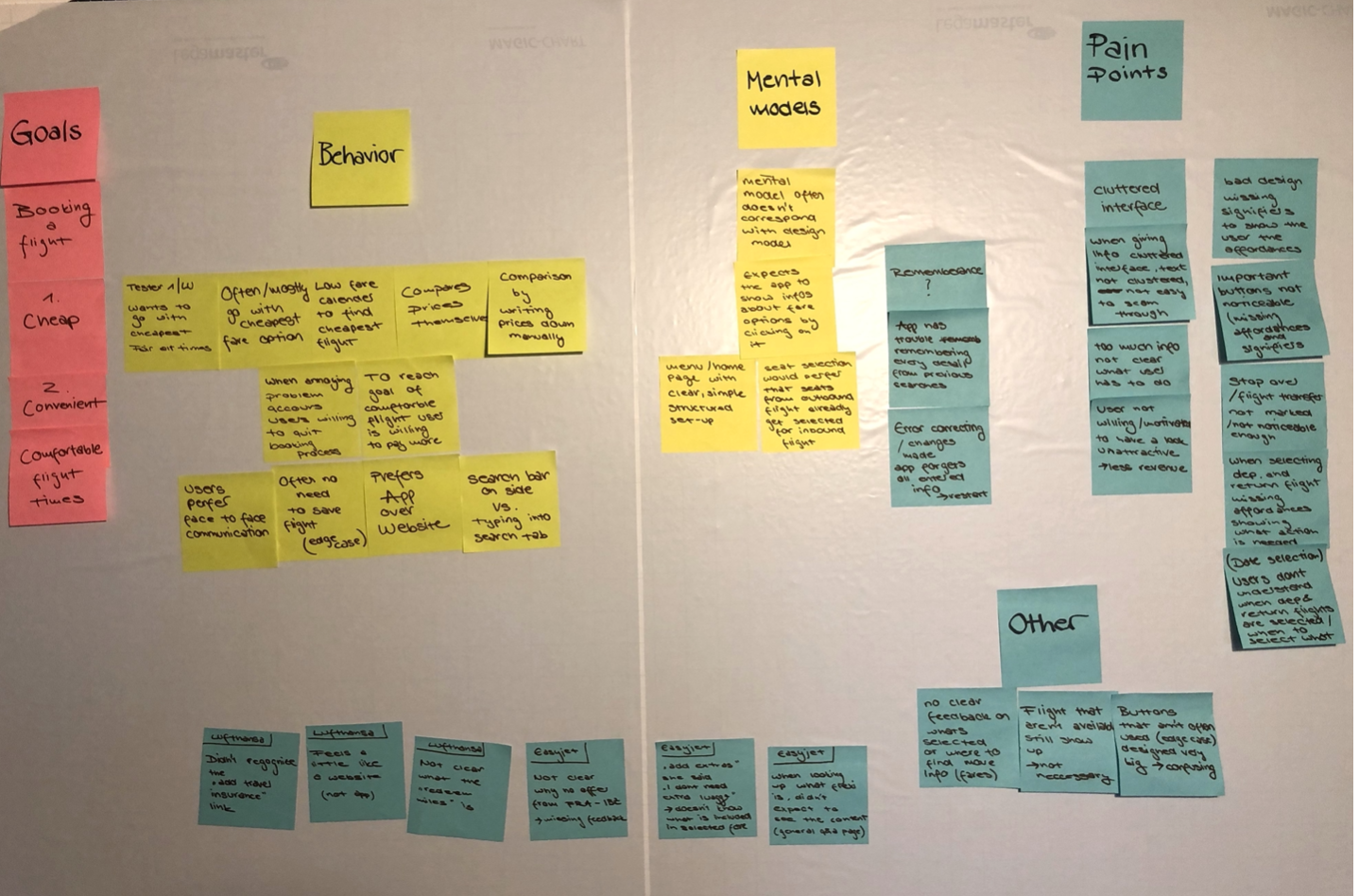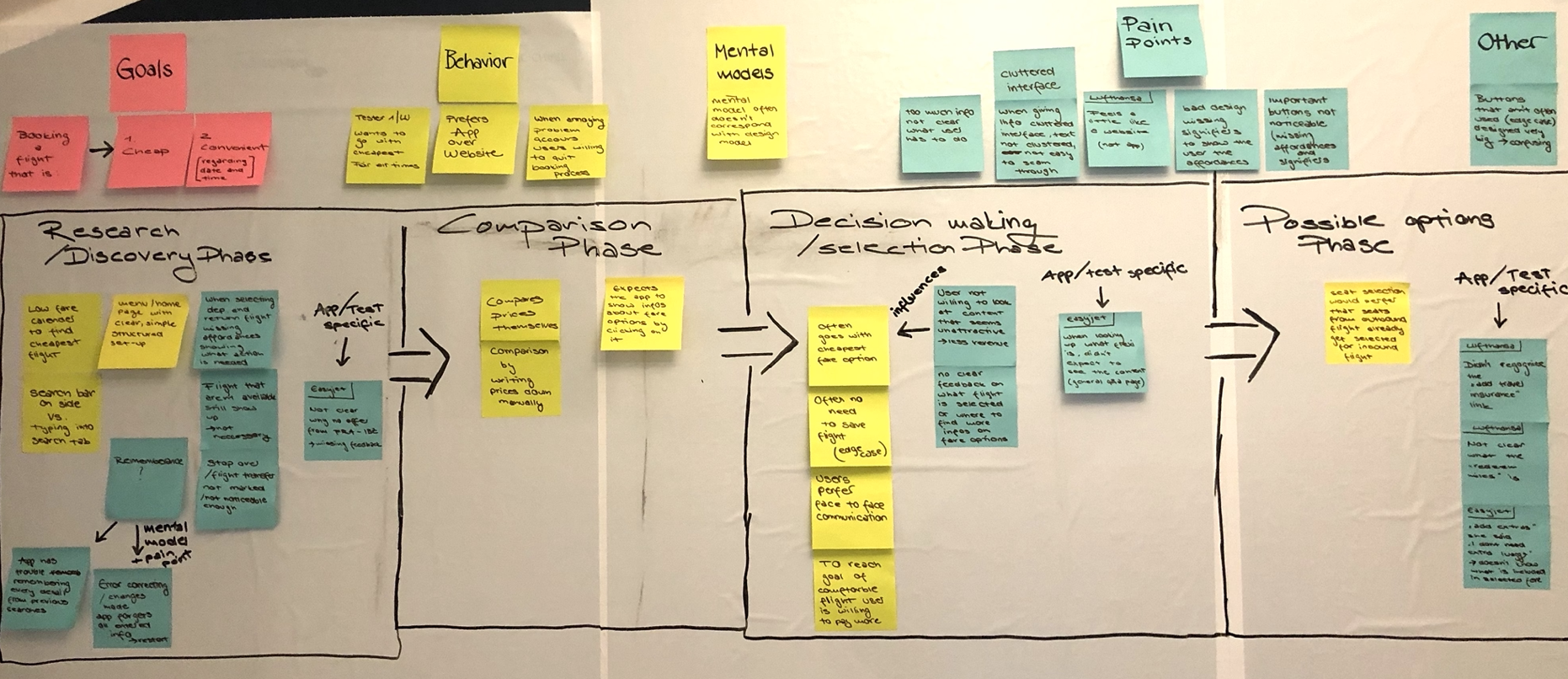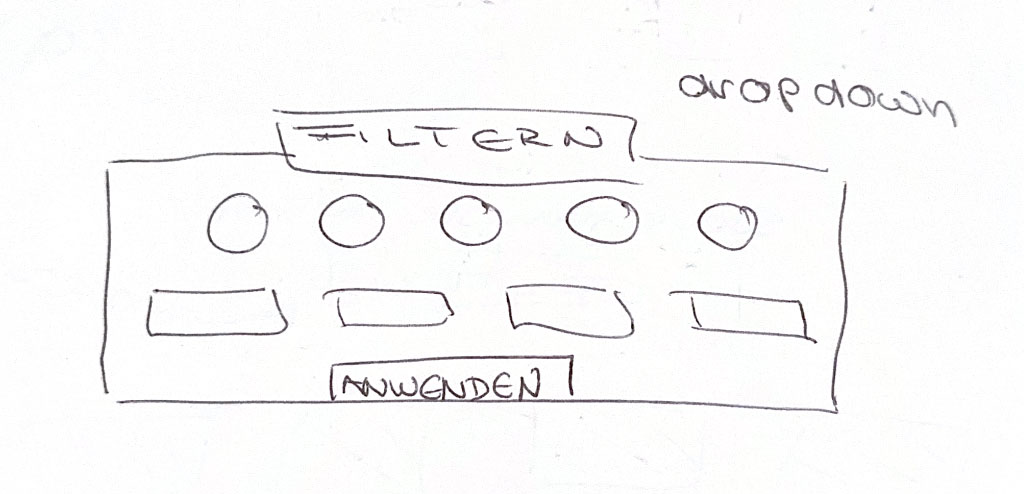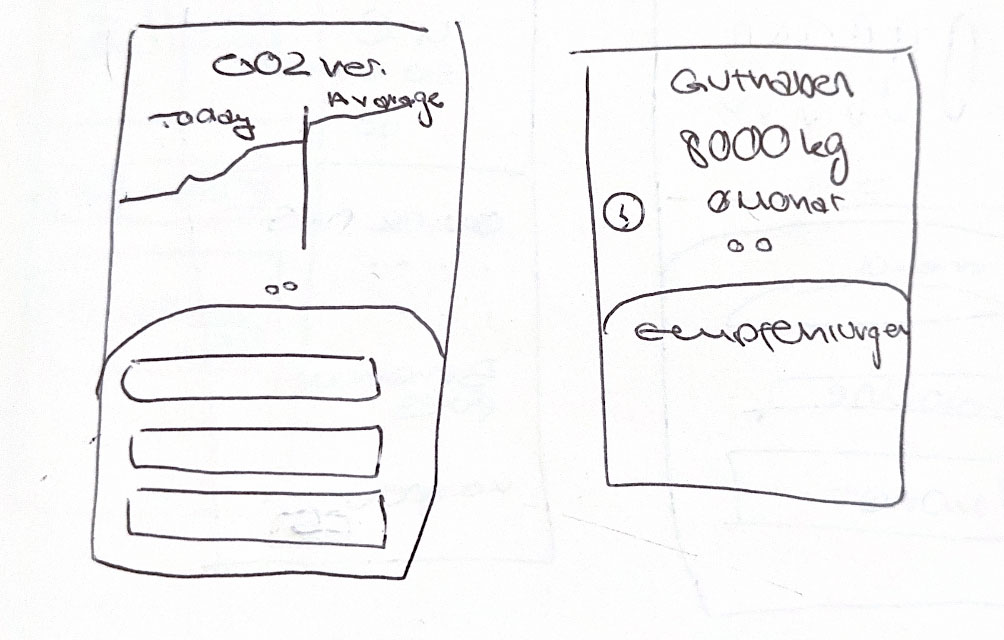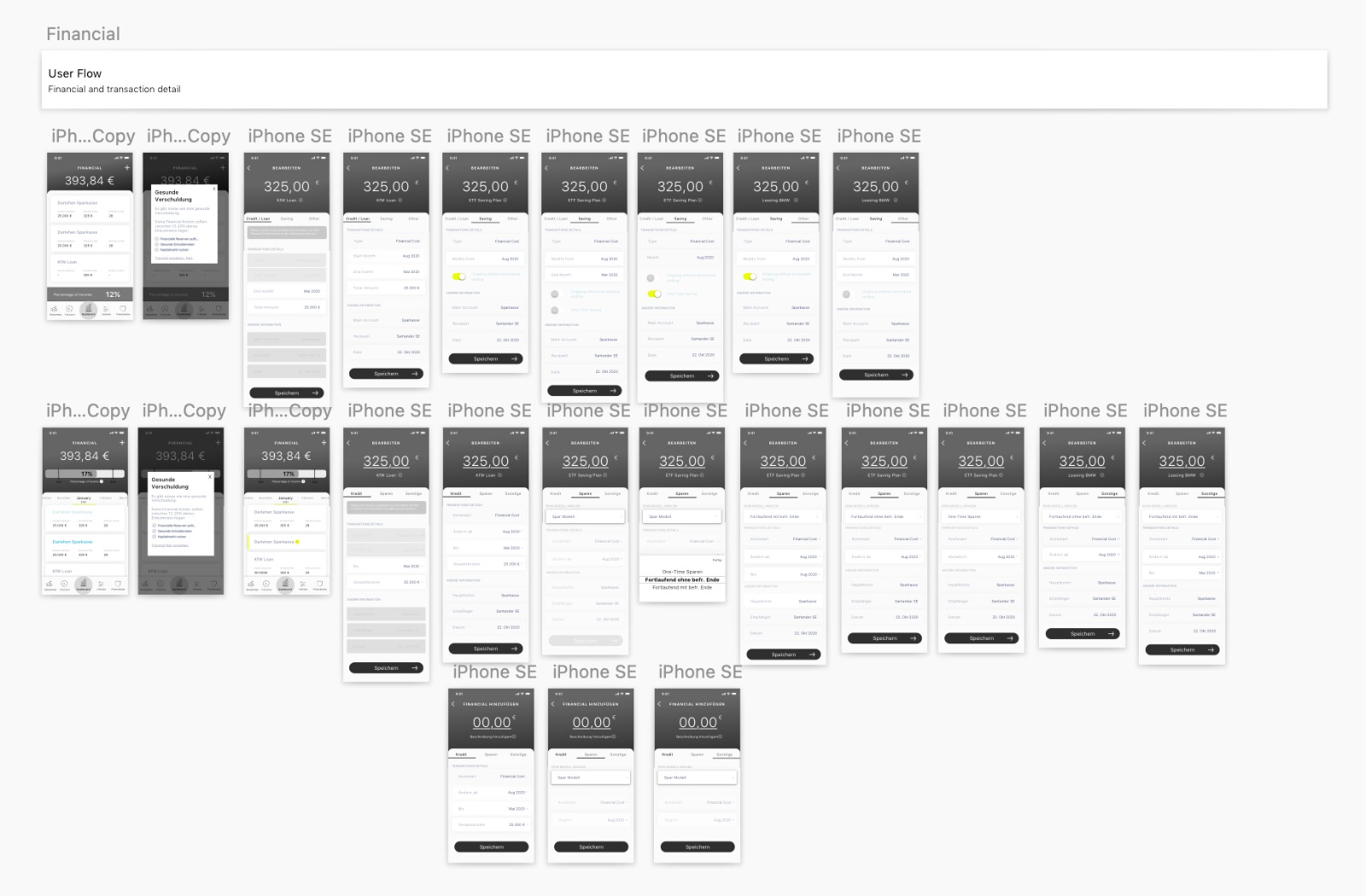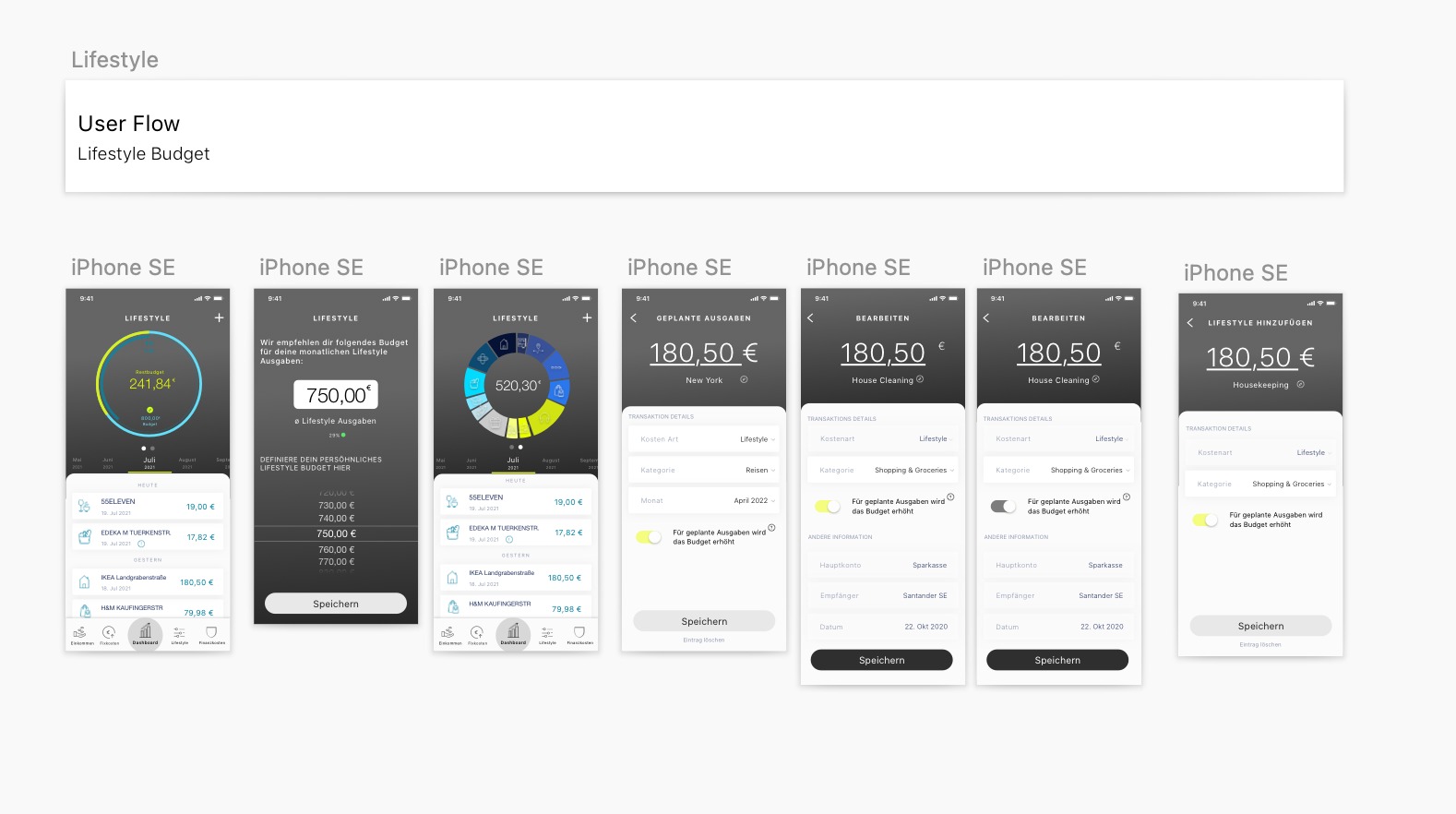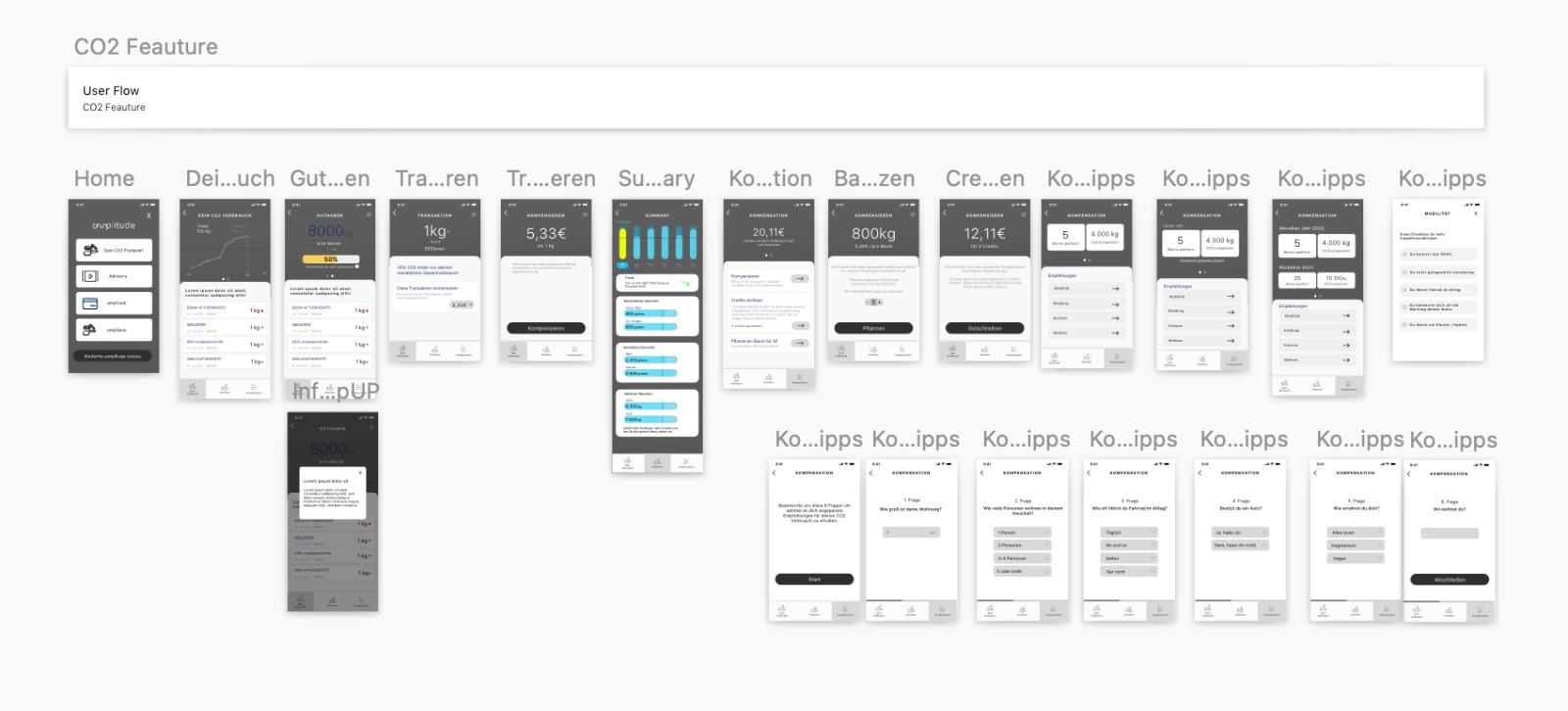01. Discovery
- Understand the user
- Understand the root problem
The first step in my design process is crucial, as it helps to ensure that the design is central to the needs and goals of the end-user. This phase involves analysing research results such as user interviews, surveys, and data analysis to gain a deep understanding of the target audience.
Once the target users are understood, I will identify specific problems that have to be solved and clarify the design objectives. The problems could be related to user needs, such as reducing frustration, or to business objectives, such as increasing conversion rates.
02. Research & Analyse
- Market research
- Competitor analysis
- Pain points and mental models
- Define user flows
- Customer journey map
I conduct market research and analyse the competitive landscape to find best practices and solutions. I also map the user’s flow through the product, documenting pain points, mental models and goals of the user in a detailed user journey map. This helps me prioritize problems, identify both quick wins and long-term goals, and develop a deep understanding of the user’s problems.
03. Hypothesis driven design & Ideation
- Formulate hypothesis
- Ideate possible solutions
- Rough sketches
- Low fidelity wireframes
I work with a hypothesis-driven design thinking approach, which is a crucial method that ensures that the solution being developed is firmly rooted in a thorough understanding of the problem and the users.
I start with formulating hypotheses for each earlier on defined problem or pain point. These hypotheses are then tested through the process of ideation, where I generate a wide range of potential solutions, beginning with rough sketches or low-fidelity wireframes.
The goal of this approach is two-fold: to solve both quick wins and underlying pain points that users experience with the product, while also addressing the superior problem that we are facing. By using this methodology, I am able to iterate more quickly and effectively identify roadblocks early on, reducing risk and ensuring that the solutions I create are more impactful and effective.
04. High fidelity Wireframes
- Create wireframes
- Design user flow
- Prototyping
After working on possible solutions and ideas I create high fidelity wireframes create a detailed representation of a product’s user interface and functions. At this stage I am in close contact with UI Designers, developers and product owners, for feedback loops and handing my wireframes over to the UI Designers.
05. Communication
- Weekly Check-ins with developers and product owners
- Feedback loops
Throughout the entire process I always stay in close contact with product owners, UI Designers, UX Researchers and Developers.
Depending on the project, we have weekly check-ins regarding onboarding, feedback loops and design hand-overs, keeping everyone in the loop at all times and presenting the current state of the designs.
06. Deliver & Iterate
- Product & design presentation
- Hand-off to developers
- Data collection
- Design iterations
Once the designs are finalized and are handed to the developers, I stay in close contact with them and supporting them during the development phase. Ensuring the end product delivers a high-quality user experience to the users.
